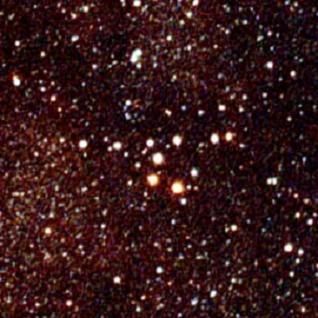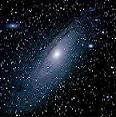Post by glactus on Feb 17, 2008 4:44:45 GMT

In the late 17th century the astronomer Johannes Hevelius created this constellation. It was originally known as Vulpecula cum ansere - "the little Fox with the Goose" Hevelius didn't regard Vulpecula and the star Anser to be two separate constellations, but later the stars were actually subdivided into a separate Anser and (a) Vulpecula. The name Vulpecula correctly means "little fox", and is widely used. Since it was invented in the 17th century from faint stars, there is no earlier mythology associated with the constellation Vulpecula.
Notable stars:
Alpha Vulpeculae
The brightest star in Vulpecula is (a) Vulpeculae, a magnitude 4.44 red giant laying at a distance of 297 light-years. The star is an optical binary, separation of 413.7", that can be split using binoculars. The star also carries the traditional name Anser, which refers to the goose the little fox holds in its jaws.
PY Vulpeculae
The pulsating white dwarf star PY Vulpeculae exhibits pulsation modes with peculiar properties that set it apart from other variable stars in the ZZ Ceti variable DA white dwarf class. These peculiarities include a low total pulsation amplitude, a mode with bizarre amplitudes in the ultraviolet, and a mode harmonic that exceeds the amplitude of its fundamental. Distance from Earth is 60.4 light years and Magnitude is 12.84.
HD 189733
HD 189733 is a parent star in this constellation and is located at a distance of 63 light years from Earth. Apparent magnitude of the star is 7.3. Orbiting around HD 189733 is planet HD 189733 b which is believed to be a very hot Jupiter and its exitence has been confirmed. The planets appearance is Silicate clouds over dark sodium haze and the planet is possioned out side of the Habitability Zone, orbiting around the parent star every 2.219 days.
HD 1881015
Parent Star: HD 188015 is located at a distance of 171.56 Light Years from our Solar system, and has an apparent Magnitude of 8.22. Orbiting around HD 188015 is planet HD 188015 b, believed to be a Water Cloud Jovian and its exitence has been confirmed. The planets appearance is white water ice clouds and the planet is possioned at Earthlike. Temperatures at Mean Orbital Distance of 1.19 AU. The estimated mass of the planet is 1.26 Jupiters. The planet Orbits around the star every 456.46 Days, and was discovered in 2005.
Notable objects:

Messier M 27 The Dumbell nebula
The Dumbbell Nebula, also known as Messier 27, M 27, or NGC 6853, is a planetary nebula laying at a distance of about 1,360 light years. This object was the first planetary nebula to be discovered by Charles Messier in 1764. At its brightness of visual magnitude 7.5 and its diameter of about 8 arcminutes, it is easily visible in binoculars, and a great observing target in amateur telescopes.

Brocchi's Cluster,
Brocchi's Cluster, also known as the Coathanger, is a conspicuous asterism easily seen with binoculars in this constellation. The asterism is made up of ten stars ranging from fifth to seventh magnitude which form the conspicuous Coathanger, a straight line of six stars with a "hook" of four stars on the south side. An additional thirty or so fainter stars are sometimes considered to be associated as well. The brightest star has a magnitude of 5.15, and Distance from Earth is 380 light years.

The Dyson Andromeda
credits:
Vulpecula map: Wikipedia
en.wikipedia.org/wiki/Vulpecula
image: Messier M 27 Dumbell nebula
en.wikipedia.org/wiki/Dumbbell_Nebula
image: Brocchi's cluster: wikipedia
en.wikipedia.org/wiki/Brocchi's_Cluster


